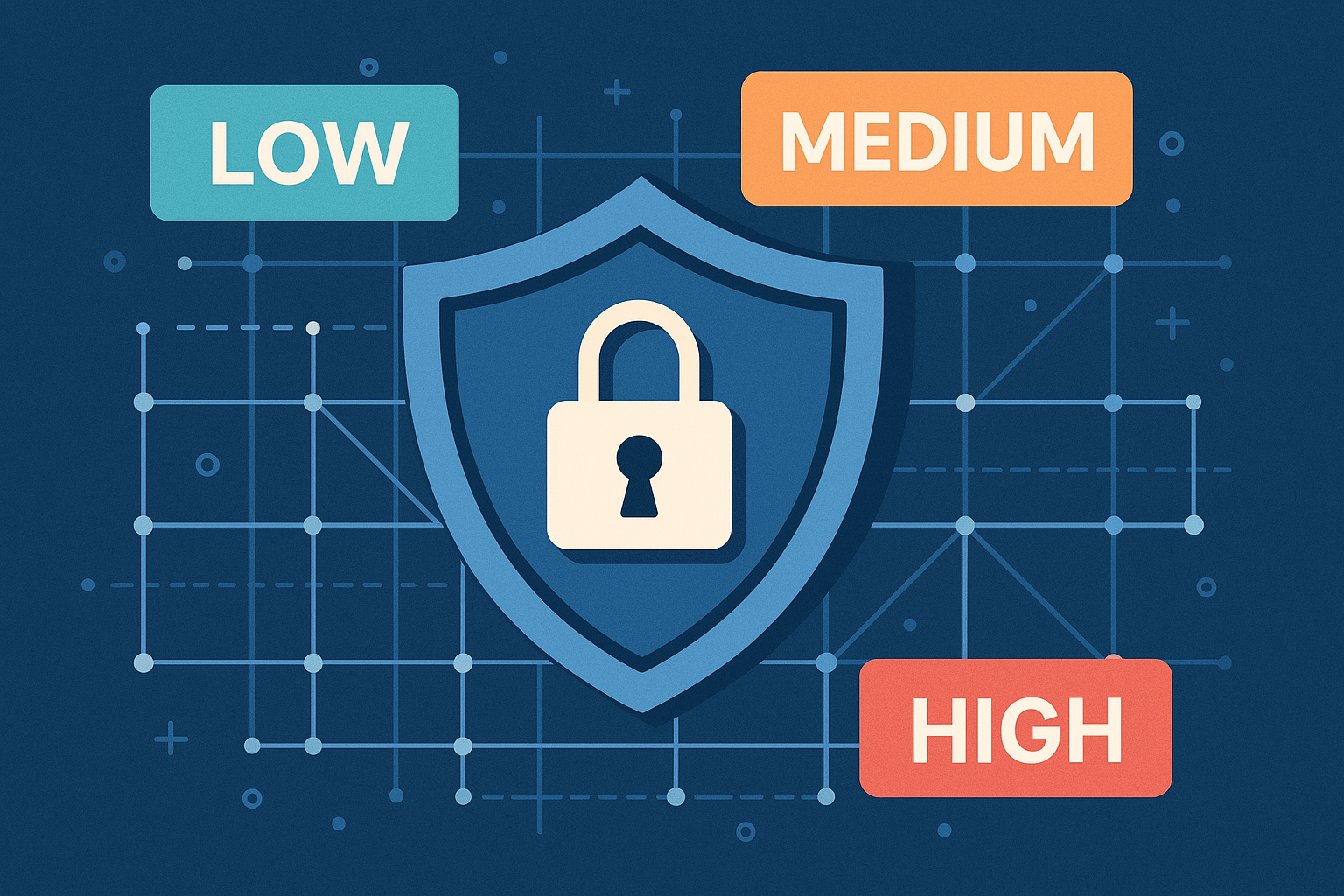Appraise the Threat Level and Vulnerability Risk
Appraise the Threat Level and Vulnerability Risk
Introduction
In today’s digital world, businesses face constant cyber threats. To stay safe, it is important to appraise the threat level and vulnerability risk with care. If these risks are ignored, attackers may find gaps that lead to data theft, system shutdowns, or costly recovery efforts. By learning how to evaluate threats and weaknesses, companies can take stronger steps to protect their future.
What Does It Mean to Appraise the Threat Level?
To appraise the threat level is to measure how likely a cyberattack is and how much damage it could cause. This process often divides risks into three groups: low, medium, and high.
- Low threat level: Attacks are unlikely and cause little harm.
- Medium threat level: Attacks may occur and can create moderate problems.
- High threat level: Attacks are very likely and can cause serious losses.
When an organization knows the level of threat, it can respond in the right order, fixing urgent risks first and less serious ones later.
What Is Vulnerability Risk?
While threat level looks outward at dangers, vulnerability risk looks inward at weaknesses. A vulnerability is a gap in systems or practices that attackers can use.
The risk depends on two main points:
- Severity – How much damage will the weakness cause if attacked?
- Ease of attack – How simple would it be for hackers to use this weakness?
When both severity and ease of attack are high, the risk is severe and must be fixed without delay.
Why Businesses Must Appraise the Threat Level and Vulnerability Risk
Failing to appraise these risks often leads to costly outcomes. A single breach may cost a business millions, and the loss of trust may last even longer. Therefore, regular risk checks are not optional but essential.
By doing so, organizations gain:
- Stronger defenses because risks are found early.
- Lower costs since it is cheaper to prevent than to recover.
- Compliance with rules on data safety.
- Continuity because key operations stay secure and online.
Steps to Appraise the Threat Level and Vulnerability Risk
1. Run a Security Audit
First, review all systems, devices, and software. This creates a clear list of assets and prevents gaps during the process.
2. Identify Possible Threats
Next, look at both internal and external dangers. Internal threats may be staff mistakes or weak rules. External threats may include hackers, phishing, or ransomware.
3. Test for Weaknesses
Then, use tools to scan for weaknesses. Check for outdated programs, weak passwords, or misconfigured servers.
4. Rate Risks by Impact and Chance
After finding weaknesses, give each one a score. Ask: How much harm could this cause? How likely is it to happen?
5. Set Priorities
Because resources are limited, fix the highest risks first. Then work on medium and low ones in order.
6. Monitor Regularly
Finally, keep watch at all times. Since threats change, continuous checks are key. Firewalls, detection tools, and endpoint monitors can help.
Levels of Threat and Their Risks
Low Threat Level
- Outdated software not linked to main systems
- Minor phishing attempts
- Attacks with little chance of success
Medium Threat Level
- Malware causing temporary slowdowns
- Targeted social engineering
- Systems with moderate access to data
High Threat Level
- Ransomware locking vital systems
- Zero-day flaws in critical tools
- Advanced attacks aimed at infrastructure
This way of ranking makes it easier to match defenses with the level of risk.
Tools That Support Risk Appraisal
To make the process easier, organizations can use:
- Vulnerability scanners to find flaws
- Risk frameworks like NIST or ISO to guide policies
- Threat intelligence feeds to track new dangers
- Penetration testing to mimic real-world attacks
These tools add structure and clarity to the process.
Best Practices to Lower Risk
- Update often: Apply patches quickly.
- Train staff: Teach them to spot phishing and use safe passwords.
- Use multi-factor login: Go beyond passwords.
- Keep backups: Prepare for quick recovery.
- Plan responses: Know what to do if an attack happens.
Each of these steps lowers both threat level and vulnerability risk.
Conclusion
When businesses take time to appraise the threat level and vulnerability risk, they reduce the chance of serious harm. By rating risks, fixing urgent flaws, and keeping defenses up to date, organizations protect not only their data but also their future growth. In a world where threats evolve every day, the best defense is clear insight followed by consistent action.




Comments are closed